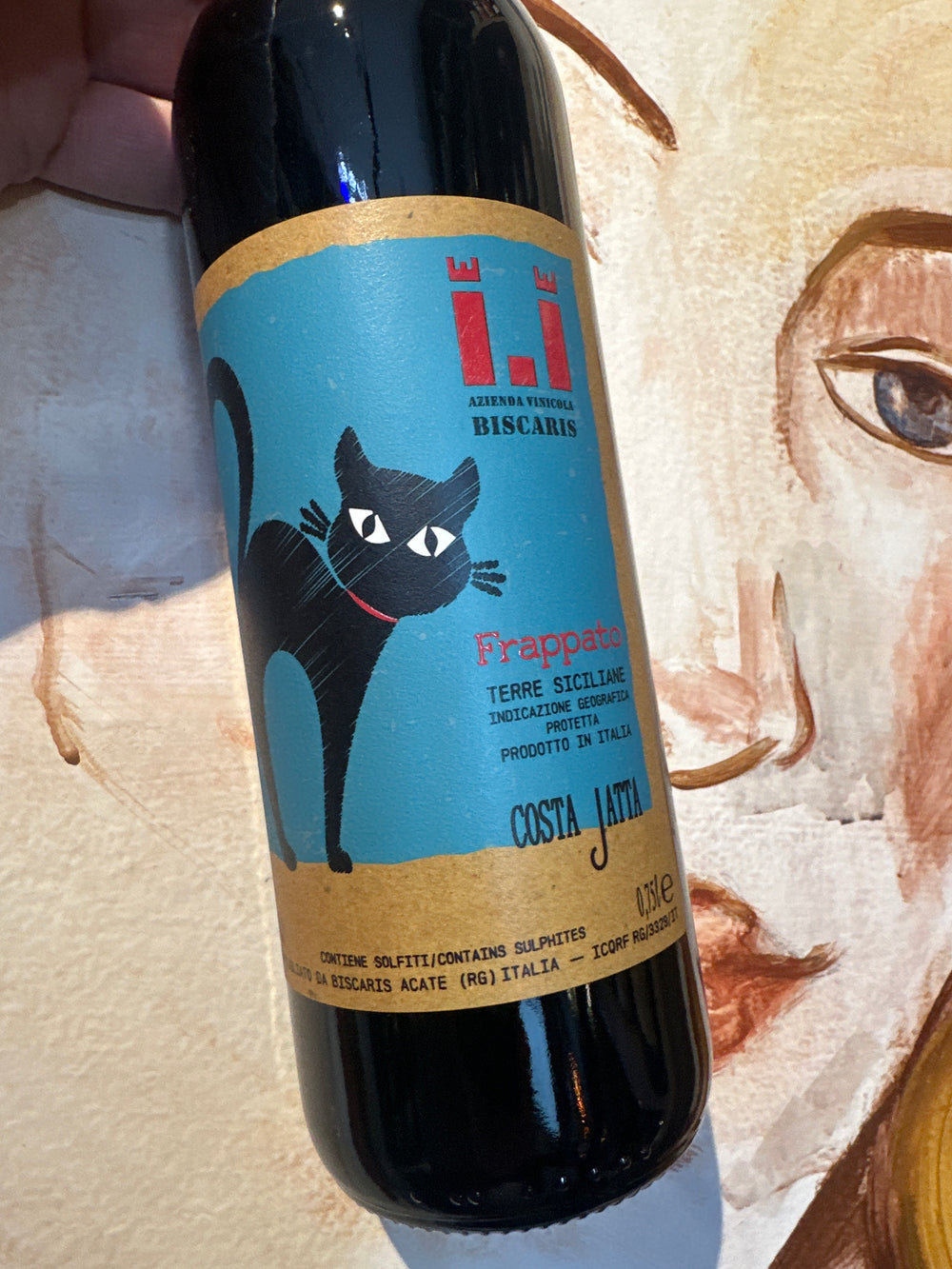
Biscaris 'Costa Jaffa' 2024
The Wine
100% Frappato di Vittoria
This cool black cat is sure to bring good luck—full-bodied yet soft, with notes of dark fruits and dried herbs, a touch of structure, and refreshing brightness. No new oak here, just pure, fresh berries—super moorish, plush, and aromatic. Meow, Meow!
The Details
Variety - Frappato
Country - Italy
Region - Sicily
Extra - Cork
Year - 2024
Volume - 750ml
About the Wine Maker 
Biscaris is an 11-hectare biodynamic vineyard located in the town of Acate, within the classic zone of Sicily's sole DOCG, Cerasuolo di Vittoria. The winery's name harks back to a time when Acate was known as Biscaris, from 1633 to 1812, during which it was the Principality of Biscari, a heritage reflected on the wine labels with the image of the castle. Acate retained the name Biscari until 1938.
Antonia Guardabasso, the owner, along with her daughter-in-law Veronica Gentoli, oversee what is a family-run venture, employing mostly relatives. Biscaris' inaugural commercial vintage was in 2004, inspired by Nicolas Joly, who advocated for self-produced wine via biodynamic methods. Beyond the fundamental biodynamic preparations 500 and 501, which enhance soil and plant health, they also utilize natural insecticides like stinging nettle extract, quassia wood powder, chamomile, and valerian when necessary. For fungal diseases like downy mildew and oidium, they apply only copper and sulfur.
Their vineyards span 3 hectares of Inzolia, 4 hectares of Frappato, and 4 hectares of Nero d’Avola, split between two contrade: Casazza and Santissimo, situated at 200m and 100m above sea level, respectively. The vines, planted from 2003 to 2016, are cultivated as bush vines, alberello style, and are arranged in a pattern known as "mare monti," to capitalize on the breezes from both the Mediterranean Sea and the Monti Iblei, each about 15km away.
The predominant soil type is the 'terre rosse,' a nutrient-poor red sand originating from the southern Apennines, rich in active calcium carbonate. This unique soil, in conjunction with the proximity to the sea, lends a distinctive salty freshness to the wines, a notable characteristic in an otherwise hot and dry region. Harvesting is conducted on a plant-by-plant basis, prioritizing quality over quantity, with yields maintained at about 35 hl/ha for all four wines. In a departure from current trends, they do not produce a single-vineyard, old-vine cuvée, or any special cellar selection; instead, production volumes of the three varieties are adjusted annually based on conditions.


